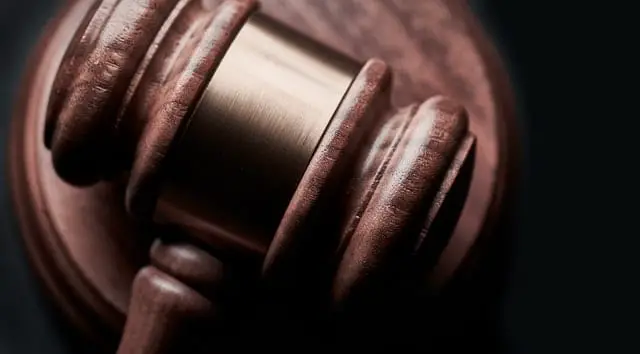

An affidavit is a voluntary written signed declaration that can be used for a variety of purposes. Examples include affirmation of birth, demise, residency. It is also used to provide testimony in a judicial proceeding. To be legally valid, an affidavit will need to be signed in front of several witnesses, including officers of the law. The process depends on what type of affidavit process and the regulations in the province or state.
A standard affidavit is a written signed confession. The person making the documented declaration certifies that the facts mentioned are correct and swears to under the agreement. It must be submitted in the presence of an official with the authority to execute the mentioned vows.
A general affidavit is the most widely used statement. The small asset affidavit seconds it.
An affidavit validates your identifying records for authentication purposes, and it is a legal document. It would include your complete legal name, birth date, and age. In some cases, the affidavit form will ask for your Social Security Number. Affidavits must be signed in front of a notary by the affiant (the individual making the sworn statement).
Various scenarios dealing with the legal system use affidavit forms:
Mostly affidavits are used in the following instances:
A statutory declaration is an affidavit in the context of a document. It accomplishes the same goal. An affidavit differs from a statutory declaration in that the latter is found in Australia, Canada, and the United Kingdom. Under the United States, an affidavit is used.
Although both affidavits are used to verify that the affiant has personal knowledge of the facts included in the record, they are not all the same. Affidavits come in a variety of forms, including:
You will be required to include a financial affidavit as part of the civil separation and divorce proceedings. Details regarding your wages, spending, investments (such as real estate, savings balances, and pension plans), and loans are all included in the declaration.
Financial affidavits are used to assess how the ex-partners’ properties and loans will be divided. If you lie in this documentation and attempt to conceal belongings, the court can enforce harsh punishments. It may include rewarding your ex-partner a hundred percent of your concealed assets.
Most prize draw needs a verified and signed and sealed affidavit to affirm the winner’s identity while receiving a prize. It means that the future winner is who they say they are. Also, the said winner is not attempting to claim a reward illicitly.
Thus, affidavits to substantiate the following:
Before signing the affidavit, make sure you have carefully read it. Examine the affidavit’s requirements closely to ensure that you might meet all of the necessities.
A notary acts as an unbiased third person and can legitimately validate the identities of those who are signing an affidavit. A notary would ask you to present a valid proof of identity whenever you consult with them.
Notaries are unable to offer professional counsel, so refrain from seeking their guidance on the case.
And if the affiant the one who writes the statement, an affidavit needs the cooperation of many people.
They are as follows:

Affidavit writing is a straightforward method. Everything you have to do now is to make sure you meet the correct coding and style guidelines.
For example: At Main and First streets I saw a black Toyota Corolla blow through a stop sign. On the passenger side, it collided with a green Ford Figo pickup truck.
For example: My name is Bob Jones, for example. My address is 1234 Main Street in Any Town, State, and I am a licensed electrician. I’m filing this affidavit because on the morning of June 8, 2020, when I was getting ready to leave for college. I observed a car crash between a red Honda Accord and a green Toyota pickup truck right in front of my home.
For example: A document verifying your identification includes less evidence than those used when seeing a traffic crash.
For example: If the affidavit is a signed declaration, make sure to mention the affiant’s name and address in the title (e.g., “Affidavit of John Doe”). If the document is to be presented in court, the caption of the case must be mentioned at the end.
If you need to compose or sign an affidavit in a traditional format, you should be comfortable with the statement’s essential aspects.

It is crucial to provide all parts of the form, whether it is used as printed, testimony under oath, a health care confirmation document, the picture page of a passport. It can also be a leasing contract, a rental document, or even a reference letter in which you answer any fundamental questions.
At the start, the first page of the paper should have a title at or near the top. It ought to be clear from the beginning that this is an affidavit.
The affiant’s name (the person attesting to the accuracy of information which is mentioned in the file) must be specified underneath the heading. It’s probably a good idea to write down the details of the other individuals who are engaged. Based on the target use of the document, there may be additional identification details at the top of the results.
The acknowledgment is located under the title and identifying detail. It usually consists of more than one “I” sentence. The first person is used in this section of the text. It clarifies whatever the affiant is pledging to be real facts. The affiant will “vouch for the fact” or pledge that now the material contained in the documentation is accurate to the greatest extent practicable in this section of the report.
The agreed document(s) must be as precise and thorough where feasible. Overall, the mentioned declaration should be wholly correct. Or else, the affiant risked being punished with treason. It’s why the affiant acknowledges the authenticity of the action(s) under threat of fraud, penalty, and incarceration. It is a standard component of an affidavit.
If you have any supplementary records, they should be organized and labeled by letter. Where possible, refer to them by mark and stick them to the end of the latest tangible folder.
If the affiant does not sign the contract, it is worthless. It is achieved in a segment devoted to the credential. The affiant will sign the contract under their legal name to give the day they signed it. One or two observers can also be accommodated. It will improve the statement’s statutory authenticity. That being said, the affiant does not sign the certificate until he or she is next to the registrar.
The portion reserved for a notary public is the final part. The trustee certifies that the affiant is authorizing the contract knowingly in his or her presence. The notary must be willing to sign, timestamp, and seal the certificate in this section of the document. A notary may also require time to fill their government notary ID number in most cases.
If you intend to use the paper, please ensure it contains all of the key elements mentioned previously. Review your affidavit for any of the important parts that will prevent you from getting any critical complications. If you don’t read it properly now, you’ll have to deal with the repercussions afterward.
There are numerous instances where an affidavit can be written in the presence of a notary officer. However, to ease out the writing process, we are providing the following samples for reference. (check messages)